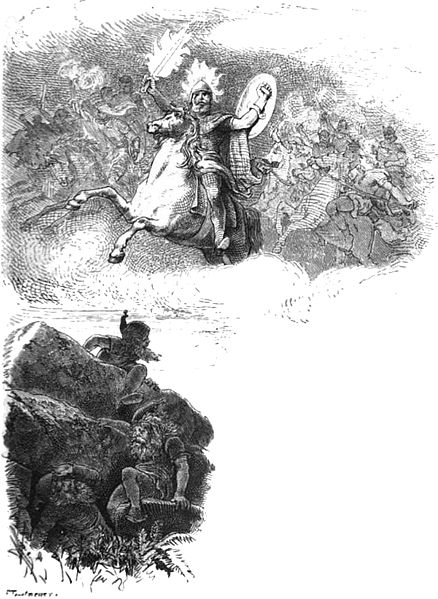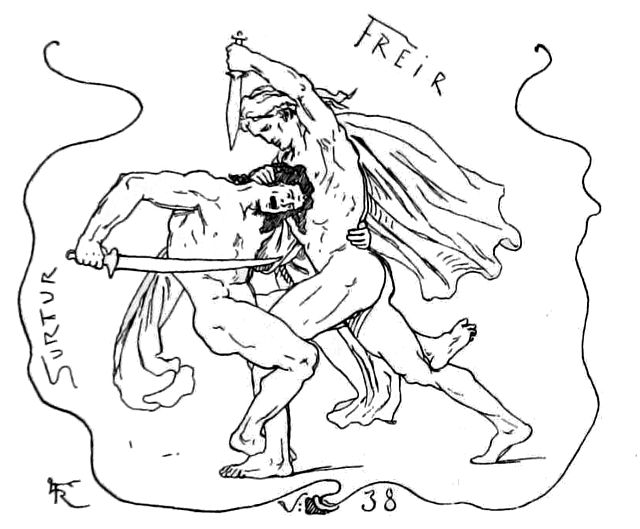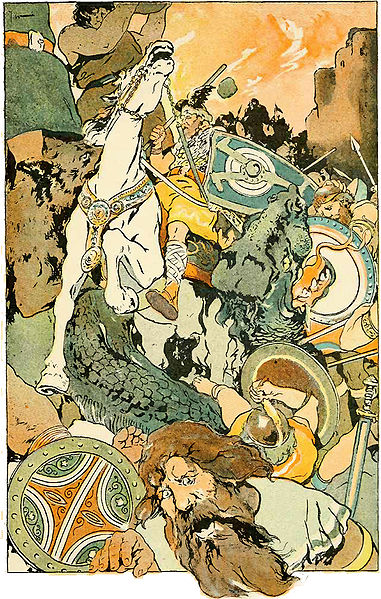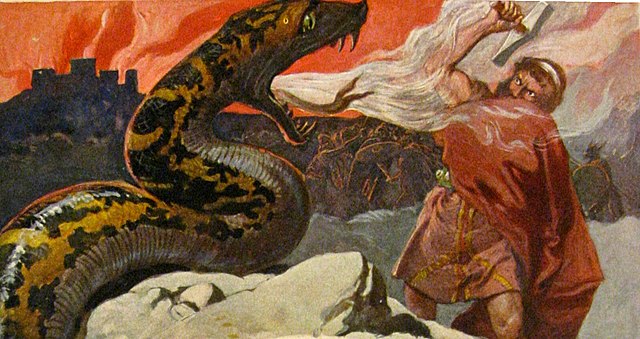In Norse mythology, Surtr, also sometimes written Surt in English, is a jötunn. He is the guardian of Muspelheim which is along with Niflheim, the only two realms to exist before the beginning of time, and the greatest of the fire giants. Surtr is attested in the Poetic Edda, compiled in the 13th century from earlier traditional sources, and the Prose Edda, written in the 13th century by Snorri Sturluson. In both sources, Surtr is foretold as being a major figure during the events of Ragnarök; carrying his bright sword, he will go to battle against the Æsir, he will battle the major god Freyr, and afterward the flames that he brings forth will engulf the Earth.
The Giant with the Flaming Sword (1909) by John Charles Dollman
Surtr with the Flaming Sword (1882) by F. W. Heine, based on a plaster frieze designed by Friedrich Wilhelm Engelhard (1859)
Battle of the Doomed Gods (1882) by Friedrich Wilhelm Heine
The battle between Surtr and Freyr at Ragnarök, illustration (1895) by Lorenz Frølich
In Norse mythology, Ragnarök is a foretold series of impending events, including a great battle in which numerous great Norse mythological figures will perish ; it will entail a catastrophic series of natural disasters, including the burning of the world, and culminate in the submersion of the world underwater. After these events, the world will rise again, cleansed and fertile, the surviving and returning gods will meet, and the world will be repopulated by two human survivors, Líf and Lífþrasir. Ragnarök is an important event in Norse mythology and has been the subject of scholarly discourse and theory in the history of Germanic studies.
The north portal of the 12th-century Urnes stave church has been interpreted as containing depictions of snakes and dragons that represent Ragnarök.
Then the Awful Fight Began (by George Wright, 1908)
Odin and Fenrir, Freyr and Surt (by Emil Doepler, 1905)
Thor and the Midgard Serpent (by Emil Doepler, 1905)








